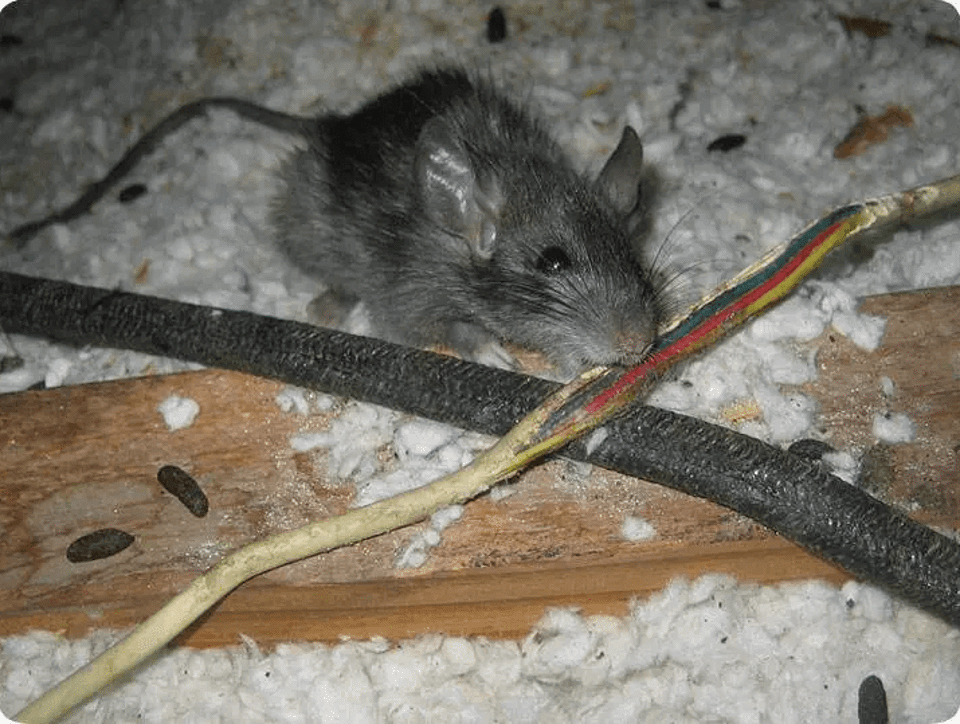For most of us, we know rats as pests, and there’s no going around that fact. They’re sneaky, they seek out our food, and they carry diseases.
You can even say they generally give rodents a bad name. There are over 2200 species of rodents, and while a few of them might be considered pests– e.g. mice, voles, gophers, etc.– they’re not as universally reviled as rats are.
Of the 50+ known species of rat, the ones we are likely to be most familiar with are the brown rat (the common rat) and the black rat (the sewer rat) — both notorious as household pests. In fact, we can even argue that rats are probably the most dangerous of all known household pests.

Here are six reasons why we believe that rats are probably more dangerous as pests than you think they already are:
Rats are Crazy Smart
There’s a reason why rats can easily infiltrate your home. These critters have very specialized brain cells known as “place cells” or “place neurons”. What these place cells do is that they give rats an uncanny ability to remember locations, allowing them to not just navigate the best routes in and out of your home, but also to consider alternatives as it remembers other possible entry points and exits.
As rats do a bit of scouting and recon around your house, they make a sort of “movie” in their heads, allowing them to better map out different routes, particularly when zeroing in on food sources.
This is why you need to be particularly thorough when proofing your home against rats. Even as you plug in a gap in the wall or secure windows and openings, given enough opportunity to case your home, a determined rat can find a way inside whether from below or above.
Rats are Extremely Agile
Speaking of sneaking your home from above, rats are also able to use overhead power wires or other cables to see if they can enter via your roof or a negligently opened attic window.
While rats might be able to survive a 50-foot fall without sustaining any serious injuries, balancing themselves on a length of overhead cable is fairly simple matter. That’s because rats’ tails— with a length generally as long as their bodies– can act either as a counterweight (for purposes of maintaining balance) or as an extra hand of sorts (if it needs to wrap around something for a little extra stability).
This gives them superior agility, allowing them even more options– whether it’s navigating across dangerous ground via a bit of cable or scaling heights via poles and walls– with the ultimate goal of infiltrating your home.
Rats Are Strong
Don’t underestimate these little creatures– rats are strong (and determined) enough to open doors. Cabinets, cupboards, lids on containers, even your refrigerator door can easily be opened by a fairly motivated rat.
Also, rats have been known to lift objects just a bit more than their body weight, which means larger, more developed specimens can easily move around a one-pound bag of food.
Furthermore, rats’ hind legs are built like springs, allowing them to leap about two feet in the air, or jump about four feet across– a handy skill to have when trying to get to hard-to-reach places.
Rats Can Squeeze Through Really Small Openings
It’s as if rats are built for infiltration; so long as their small little heads can fit into a gap, a hole, a crevice, or an opening, rats can amazingly compress their larger bodies to be able to wiggle their way through.
This is due to the fact that rats’ ribcages can somehow “flatten” or “collapse” when they need it to. Individual ribs connected to the rodent’s spine are hinged, allowing them to contract– thereby allowing the said rat to squeeze through the said hole– and then expand back to normal once it’s all clear.
Rats Talk to Each Other
Most pest control experts will tell you that it is difficult to catch groups of rats; you’re likely to catch them one at a time. Why is that, you might ask? It’s because rats can tell other rats to stay away when there’s danger, allowing them to scurry away and hide in safety.
Rats actually communicate with each other using a form of ultrasonic secret language, and they constantly update other rats nearby. Through a series of squeaks and chitters not easily picked up by human ears, they can convey fear, satisfaction, or distress to other nearby rats.
Think of their way of communicating as a form of “rat Twitter”, as rats constantly broadcast which areas are safe, which places have food, or if they’re sensing danger, and so on.
Rats (Sort of) Know What You’re Thinking
Rats also have a kind of “danger sense”, especially when dealing with humans. As rats have lived with us for thousands of years, they practically know our own patterns of behavior— how we move around the house, which areas we frequent, what sort of mood we might have, and (probably most importantly) if any humans represent an immediate threat.
So one of these nights when you head down the kitchen, and flip on the light switch, if you find yourself face-to-face with a rat, and a staring match ensues even while it’s gnawing on a lamb chop, it’s not going to scurry away unless you suddenly decide to be aggressive towards it.
This is part of a rat’s survival instinct, allowing the rat to finish as much food as it can when it can.
Related articles:
- Study: Mice, Rats More Prevalent in Households Since Pandemic Broke Out
- What Is The Difference Between a Rat, a Mouse, and a Rodent?
A Final Word About Rats
If it’s a question of “which pests are the most dangerous to humans?”, one can easily argue that rats, if left unchecked, might possibly be the most dangerous household pest around.
They’re incredibly cunning, they have strong survival instincts, and they’re seemingly built to be the ultimate pest known to man.
After all, it was the hubris of Pope Gregory IX, who, in the Middle Ages, inadvertently caused the rat population to explode, hastening the spread of the Black Death. (He believed cats to be the ‘incarnation of Satan’, which led to mass extermination of cats at the time, taking away a key predator to keep rat numbers in check around Medieval Europe.)
Remember, the Black Death of the 14th century wiped out 60% of Europe’s population– about 50 million at the time– in just a few short years. For this reason alone, we should wary about rats getting out of control.
So, if you think you suspect you have a rat problem, don’t take it lightly. Keeping a cat or two around might certainly help but calling professional exterminators might just be the more prudent option you have on hand.
Rocklin Pest Control Services is just a quick phone call away if you need licensed pest extermination specialists to give your home a quick inspection and check for rats (or any other more common household pests). Feel free to set an appointment with the Rocklin Pest Control team at (916) 943-7720 today.




